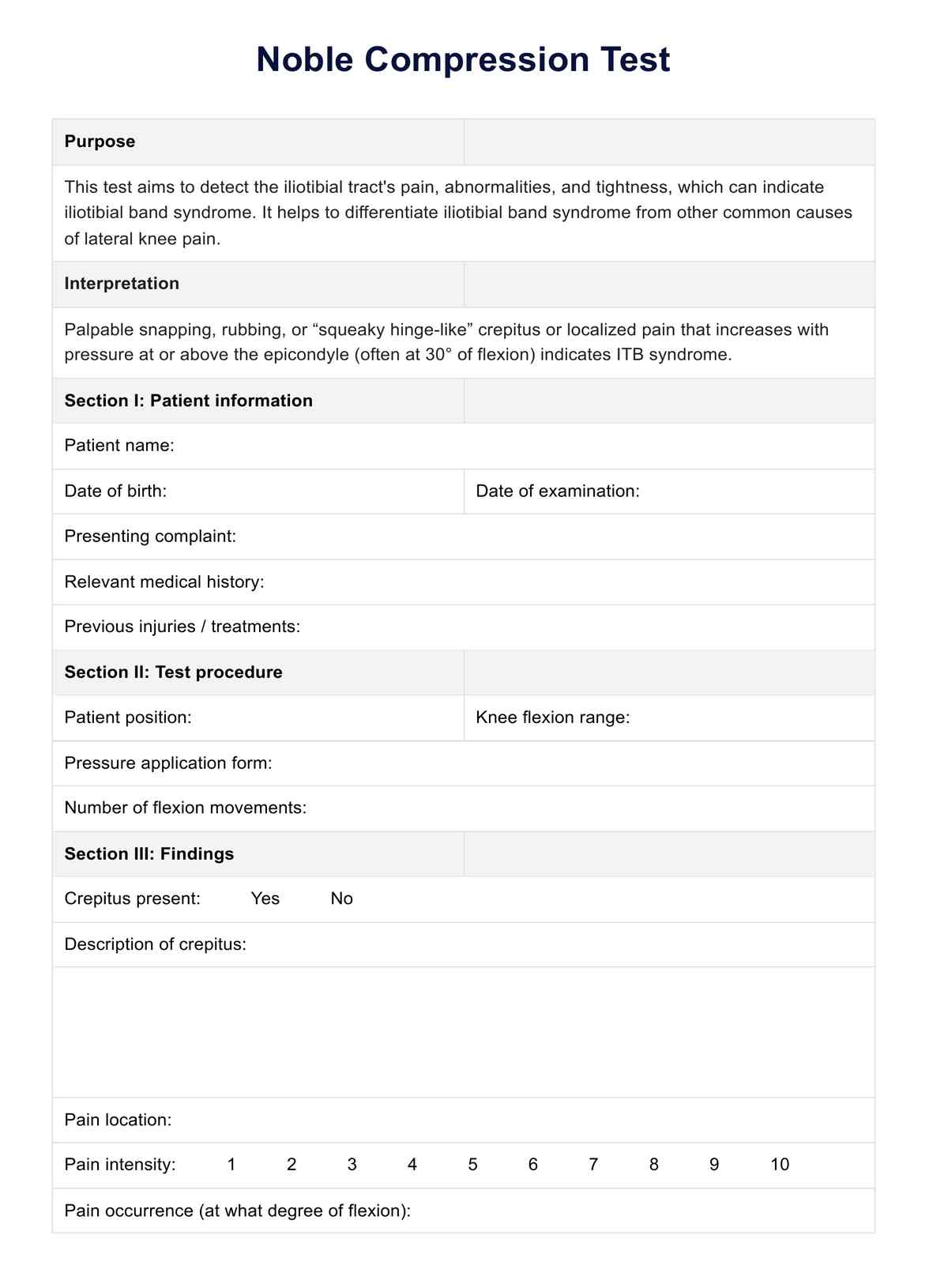Dr. Clive Noble developed the Noble Compression Test to diagnose Iliotibial Band Syndrome.

Noble Compression Test
Learn more about the Noble Compression Test with our comprehensive guide. Explore its function, operational procedure, scoring methodology, and ideal usage scenarios. Free PDF download available!
Noble Compression Test Template
Commonly asked questions
A positive Noble Compression Test is indicated by the onset of pain over the lateral femoral epicondyle, typically around 30 degrees of knee flexion. The severity of the pain is also typically noted on a scale of 1-10.
A positive test suggests the presence of Iliotibial Band Syndrome. However, the results should always be considered with the patient's history, other clinical findings, and possibly further diagnostic tests.
EHR and practice management software
Get started for free
*No credit card required
Free
$0/usd
Unlimited clients
Telehealth
1GB of storage
Client portal text
Automated billing and online payments











